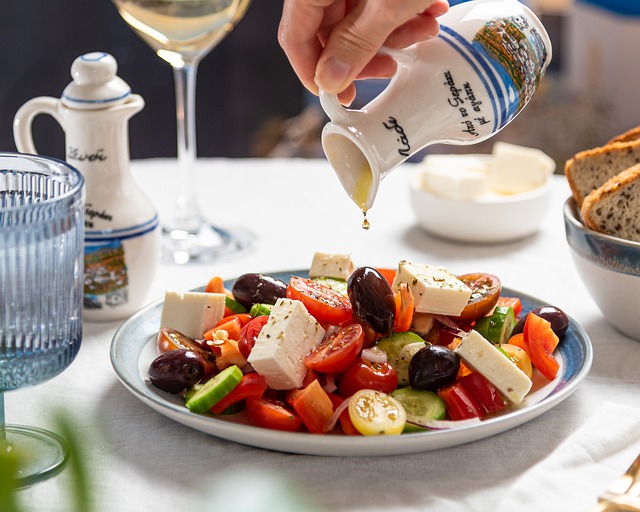Nothing beats the rich, fresh flavor of homemade olive oil and vinegar salad dressing. By combining your favorite vinegar with a high-quality olive oil, you can unleash a symphony of flavors that can dramatically enhance your salads and excite your taste buds, while providing a host of health benefits. This article will take you through the steps of making a healthy olive oil and vinegar salad dressing.
Choose your carrier oil carefully
You need a solid base for your dressing, and that’s oil. Most people love olive oil because of its immense health benefits and rich flavor. This oil contains monounsaturated fats, which contain antioxidants that fight inflammation, heart problems, and more.
When making your choice, be sure to choose the highest quality extra virgin olive oil (EVOO). This will allow you to enjoy the benefits of polyphenol-rich olive oil, which is less processed and contains most of the flavor and nutrients.
Looking for the perfect vinegar soup
The vinegar helps incorporate acidity into the dressing to balance the smoothness of the olive oil. You can choose from a variety of vinegars, such as balsamic, coconut, red wine, sherry, and apple cider vinegar.
Keep in mind that each type of vinegar has its own unique flavor and possible health benefits. For example, balsamic vinegar is often preferred because of its complex sweetness and ability to add depth to the dressing. Apple cider vinegar, on the other hand, is known for its potential health benefits, such as promoting weight loss and improving digestion.
While you may want to settle on your favorite vinegar and live with it, there’s absolutely nothing wrong with trying a variety of flavors. This will help you determine which vinegar taste you really like.
balance flavors
Use the right ratio of oils and acidity to create harmony. The classic oil-and-vinegar dressing recipe follows a 3:1 ratio, three parts oil to one part vinegar. You can adjust this ratio to match your personal preference for vinegar type and acidity preference. Your ingredients should include:
- 3/4 cup olive oil
- ¼ cup vinegar
- black pepper to taste
- Add salt to taste
- Optional add-ins such as honey, lemon juice, minced garlic, Dijon mustard and herbs
Mix base
Place the olive oil and vinegar of your choice in a bowl and stir until well combined. Season with salt and pepper until it’s to your liking. Start with just a pinch and adjust accordingly to avoid overdoing it.
Add extra content
If the dressing is too spicy, you can sweeten it with an optional add-in such as honey. Lemon juice can help you brighten it up and add a citrus flavor if the dressing is too mellow. Dijon mustard, on the other hand, allows you to add a rich, creamy flavor to the dressing, while minced garlic provides extra flavor. Consider using thyme, basil, parsley or any other fresh herbs to infuse vibrant, fresh flavor and aroma into your salad dressing.
Emulsify to maintain stability
Emulsified dressing mixes for a long time and evenly coats salad greens. Consider using a food processor or blender to easily emulsify your dressing, especially if you’re adding ingredients like honey and mustard. If you don’t have either, stir the dressing vigorously to fully emulsify all the ingredients into a smooth dressing. Store the dressing in a jar or glass bottle with a tight-fitting lid.
Making your own healthier homemade salad dressing is easier and more fun. The key is to use quality ingredients, balance all the flavors, emulsify well, and store the seasonings correctly.

